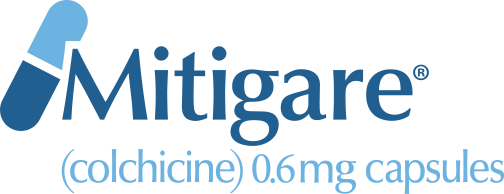
Gout is a form of inflammatory arthritis that affects about 8 million people in the US.1 You may already know that men are more likely to suffer with the disease than women,1 but it may surprise you to learn that gout doesn’t always affect both sexes in the same way.2 Read on to find out more about the gender differences in gout.2
Age of onset
Until the age of 65, men are far more likely to suffer with gout.2 After 65, however, women become increasingly likely to develop the disease.2 In younger women, it is believed that certain female hormones help the body maintain a normal uric acid level.2 As menopause draws closer and these hormones begin to diminish, however, the serum urate level can rise—and so can the risk of gout.2
Other health problems
Gender differences in gout also include other health problems. High blood pressure and poor kidney function, are more common in older women who have gout than in men who have the disease.2 Diabetes on the other hand, another common health problem among people with gout, appears to affect just as many men as it does women with gout.2
Diuretic use
Women with gout are more likely to use diuretics (medications that help to rid the body of salt/sodium and water; also known as “water pills”) than men.2 It is believed that diuretic use is more common among women with gout because these types of medications often are used to treat high blood pressure and poor kidney function—health problems that are more common among women with gout.2
Alcohol use
Research shows that men with gout are more likely to drink alcohol than women who suffer with the disease.2
Obesity
Researchers found that gout is more common in men who are overweight—specifically those with a body mass index (BMI) of 25 or greater.2 In women, however, there does not appear to be any relationship between being obese and having gout.2
Joints affected
As far as the first attack is concerned, men are slightly more likely to develop gout in the big toe than women.2 It is also worth noting that gout is more likely to affect multiple joints in men than in women.2 However, significantly more women develop tophi (the hard, chalk-like urate lumps that can appear under the skin in people with gout) than men.2
Talk with your doctor
If you suspect you have gout, make an appointment to see your doctor as soon as possible—regardless of your gender. Take a moment to download and complete the Gout Flare Questionnaire (from Resources for Patients) beforehand to discuss during your visit. If you are diagnosed with gout, your doctor may be able to recommend lifestyle changes and/or prescribe medicine that can help you prevent gout flares.
NOTE: This article was not written by a medical professional and is not intended to substitute for the guidance of a physician. These are not Hikma’s recommendations for gout flare prevention, but rather facts and data collected from various reliable medical sources. For a full list of resources and their attributing links, see below.
Mitigare® is a registered trademark of Hikma Pharmaceuticals USA Inc.
